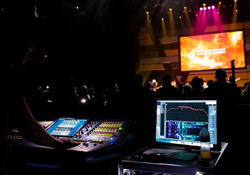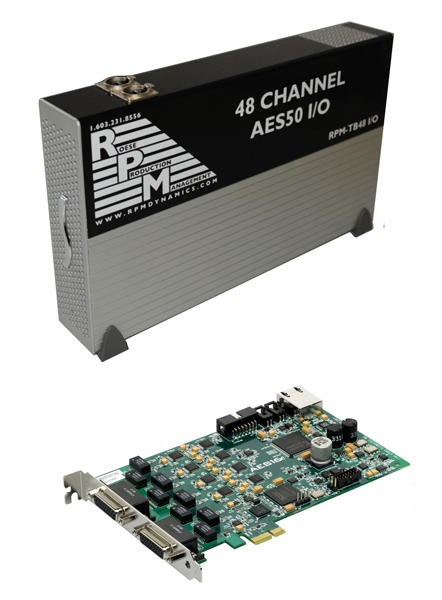Choosing an audio console can be likened to a guitarist choosing an ax – it’s the pallet with which one creates. Some engineers have built their mixing techniques around plug-ins while others rely on complex channel grouping or outboard gear.
It’s difficult to classify one platform as “better” or “worse” than another, simply because it boils down to one question: does it help produce the best-sounding show possible in the shortest amount of time?
In addition, due to the enormous influx of digital consoles in recent years, the added criteria of multitracking capability has quickly become a deciding factor in many console choices – whether on tours, in theaters, or houses of worship. With many reliable platforms on the market such as Dante, MADI, CobraNet, AES50, EtherSound and so on, the ability to multitrack one’s show has almost become an expectation.
In my previous article (here), the goal was to offer an inside look at the selection and design process for a road-ready audio system for The Austin Stone Community Church in Austin, TX. Here I’m going to expand specifically on the console and live recording portions of the system, and share some of the results that have come out of the learning process.
Upgraded Capture
In 2011, The Austin Stone released its debut live album, which spent its first week at the top of the iTunes Christian & Gospel charts, and subsequently formed a marriage between live audio and live recording. For that album, I captured the tracks by taking direct outputs from an Avid VENUE Profile console at front of house, via MADI, over fiber optical cable into an RME MADIface.
The data was then piped over FireWire into a MacBook Pro through a PCI Express card. The solution was solid, reliable, and error-free during the six weeks of live tracking.
Upon completion of the album, our producer mentioned that some re-amping was required in post-production to “warm up” the tracks, and asked if we would consider using external microphone preamps for future recording dates for some of the more essential inputs. This began my quest to find a better way to capture the highest quality tracks possible, without lugging around racks of external mic preamps (and spending a fortune in the process).
At that same time, the church was in the process of moving away from its long-time rental system provider. This fortuitous timing afforded me the opportunity to construct a control package from the ground up that would not only handle week-to-week live mixing operations, but seamlessly carry the recording load as well.
I spent the next few months doing as much research as possible on the industry’s leading digital consoles – specifically focusing on the following criteria. First, the headamps and A/D converters had to sound exceptional. In essence, it would be the first and most critical component in capturing the raw sounds, and simply could not be an area of compromise.
Second, the navigation needed to be fast. Since I’m also mixing the band’s monitors from front of house (five stereo in-ear mixes, two mono), the ability to quickly send and pan an input without flipping through a bunch of layers was a must.
I had long enjoyed the 24 mix send encoders on the Yamaha PM5D that we used, and had developed a quick and efficient workflow for monitors-from-FOH applications. I wanted to find something equally quick without the worry of possibly forgetting which layer I was on.
Finally, because of the monitors from FOH needs, it also meant that the console must have a minimum of 24 auxiliary mix buses in addition to the Left-Right/Mono buses.
Finding Direction
My attention turned to the Midas PRO Series. After performing several blind listening tests with several competitors, I was blown away by the sonic quality of the Midas. In my view, the XL8 headamp has the girth and richness of an XL4 pre (a long-standing personal favorite), but with a clarity and “openness” in the high-end that I’ve not heard on any other digital desk.
My only concern was the lack of affordable recording solutions offered by Midas and its sister brand Klark Teknik. There wasn’t a way to record more than 32 channels at 96 kHz for under $14,000.
The widely used K-T DN9650 network bridge offers the ability to convert the Midas AES50 format to just about any third-party platform up to 32 channels, at which case a down-conversion to 48 kHz is needed. However, my hope was to keep all of the tracking at 96 kHz to preserve as much of the natural “Midas sound” as possible.
Around this time, I met Jim Roese of RPM Dynamics while mixing the mtvU Woodie Awards last year. Over the week, we talked at length about a 48-channel, 96-kHz, 24-bit recording/playback solution for Midas that he was working on, utilizing a pair of Lynx Studio Technology AES50 to PCI cards, all mounted in a Sonnet Thunderbolt chassis.
The RPM-TB48 I/O is a stand-alone, elegant solution with no external interfaces required, as the Lynx cards perform one single AES50 to Core Audio conversion (at approximately 1 millisecond of added latency). Because the processor load of the conversion is being handled by the interface, the load on the CPU of the recording computer is shockingly low.





















